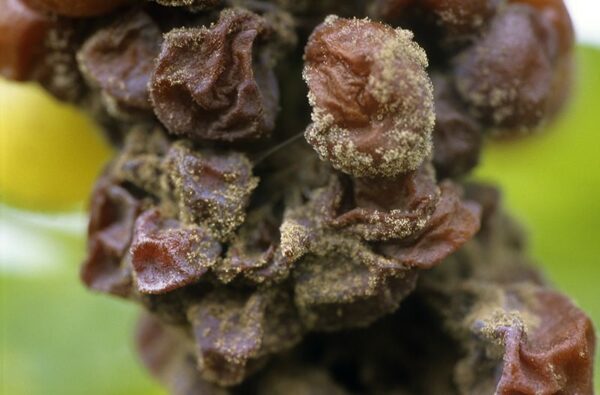 Like the fashion world it mimics, the world of wine likes to move a little faster than most of us can comfortably keep up with, thus the need for the occasional touch-up and top-up of our wine vocabulary. What follows are five terms you really ought to be familiar with even if you don’t plan on crossing swords with a Master Sommelier anytime soon.
Like the fashion world it mimics, the world of wine likes to move a little faster than most of us can comfortably keep up with, thus the need for the occasional touch-up and top-up of our wine vocabulary. What follows are five terms you really ought to be familiar with even if you don’t plan on crossing swords with a Master Sommelier anytime soon.
Hang time (haŋ\ˈtīm), noun. To my knowledge there is no grape named after hoops wizard Michael Jordan (below), who by all accounts spent nearly as much time soaring above the court as on it. Jordan’s knack for extended hang time made it seem that the laws of gravity had been suspended on his behalf, at least for as long as he wore a Bull’s uniform.
In a vineyard, hang time refers not to grapes hovering with Jordanesque grace over the landscape, but to the length of time they are allowed to remain attached to a vine. Hang time can be a neutral concept insofar as it is used to measure time elapsed between flowering in the spring and harvest in the autumn, but today it’s frequently used in reference to the practice of leaving grapes unharvested long after they have reached normal levels of ripeness and are on the verge of dehydration, even raisining.

Extended hang times are associated both with high-levels of phenolics (see below) and with a thirty-something year old trend toward super-fruity, low-acid, fat-ass red wines. Such wines have become the benchmark of quality for table wines in some quarters, while leaving others of us wondering where the refreshment and fun went. Very lengthy hang times are just the thing, however, if what you’re after is an unctuously rich dessert wine, perhaps enhanced by the late-season arrival of the oxymoronic noble rot (see botrytis cinerea, below).
Phe·no·lics, (fi-ˈnō-liks) , noun. If it has ever seemed to you that there ought to be a single word that describes all the stuff in a grape that we’re trying to draw out in the process of making wine (see Extraction, below), then rejoice. Phenolics is an umbrella term that shelters under its broad canopy a variety of chemical compounds responsible for much of the flavor, texture, and all of the color that we enjoy in wine.
Deeply-colored grapes naturally possess more of these compounds than lighter ones, and varieties rich in phenolics (cabernet sauvignon; syrah; mourvedre) typically require more degree days to ripen. One reason cool climate viticulture tends to produce lighter-bodied wines is that with a shorter growing season at their disposal, high latitude and high altitude growers have to choose varieties with less robust phenolic content. One way to talk about it: Phenolic-rich pours seem to have more wine in the wine.
Extraction (ik-ˈstrak-shən), noun. Like vineyards (see the Wine Vocabulist on yields) grapes have a certain amount of goodness to give, and no more. Winemaking is essentially a process by which that goodness is extracted and given over to yeasts to ferment. White grapes are generally gently pressed to remove the juice from the rest of the grape. Red grapes, however, are crushed en masse and fermentation takes places in a mash-up of skins, pulp, pips, and sometimes stems.
As these solids macerate, their pigments and tannins leech into the juice, contributing color, flavor, and texture to it. It’s the winemaker’s job to control the degree of extraction; to decide how much what’s in there to draw out. Too little and the wine may lack density and punch; too much and the wine may present as dry, astringent, stewed. I like to make an analogy with tea-making. To make a perfect cup, you judge the tea to water ratio, the temperature of the water, and how long you let the leaves macerate – all with a view to getting the extraction right. If you’ve ever stepped away from a steeping pot longer than you should, you know the puckeringly disagreeable result.
No matter what raw materials she is working with, the one step every maker of red wine fully controls is the degree of extraction. In this sense, she is no different from you or me when we watch both the clock and the color of our tea to see when to pull the sachet or pour the water off the leaves.
Ideas about how much extraction is proper for a classically balanced wine vary with individual winemakers, with critics, with consumers, and with the times. Until a few decades ago, grapes weren’t driven to the extremes of ripeness (and thus to extremes of phenolic content) that they are today, or subjected to extended macerations intended to draw out every last molecule of goodness they have to give.

Botrytis Cinerea (bō-ˈtrī-təs\sə-ˈnir-ē-ə), noun. Benevolent form of a fuzzy, gray fungus that attacks grapes late in the season under conditions that favor its appearance. Rare in the drier climes of the Mediterranean, it is common – but never perfectly reliable- in the vineyards of the French southwest, Alsace, the central Loire Valley, the Maconnais, and parts of Germany and Hungary. Cool, drizzly mornings and warm, sunny afternoons encourage its growth. The fungus shrivels and dehydrates grapes, concentrating their sugars. Berries blessed by the noble rot, as it’s known, may make luscious dessert-level wines — as Sauternes and Tokaji — or may merely add a complex honeyed-note to cuvées of ordinary strength.

Demeter (di-ˈmē-tər), noun. Greek name for the Bronze Age female deity associated with fertility and the harvest. There are several versions of a story that identify her as the lover of the sea-god Poseidon. Her virgin daughter, Persephone, was carried off to the underworld by Hades, with whom, after failed attempts at rescue, she remained for half of each year. Her time underground corresponds to winter; re-united with her mother in spring and summer, the earth becomes fruitful.
The wine connection? Demeter is the name of the largest organization engaged in promoting the practice of biodynamic farming, and in educating and certifying winegrowers and other agriculturalists in the system founded by Austrian architect, theosophist, and first citizen of Cloud Cuckoo Land Rudolf Steiner (1861-1925).
Biodynamics is a registered trademark Demeter International and since Demeter-certified growers pay a per bottle royalty to be able to use the term, you might want to be careful how many times a day you say it.
Reach me at stephenmeuse@icloud.com Follow Stephen Meuse